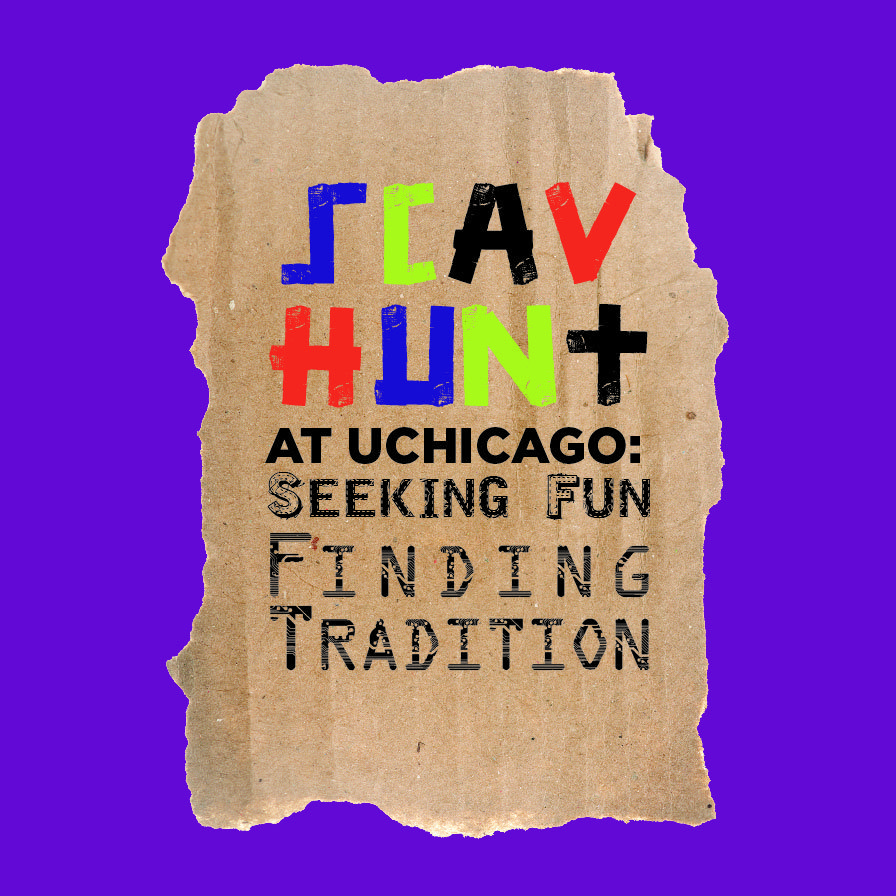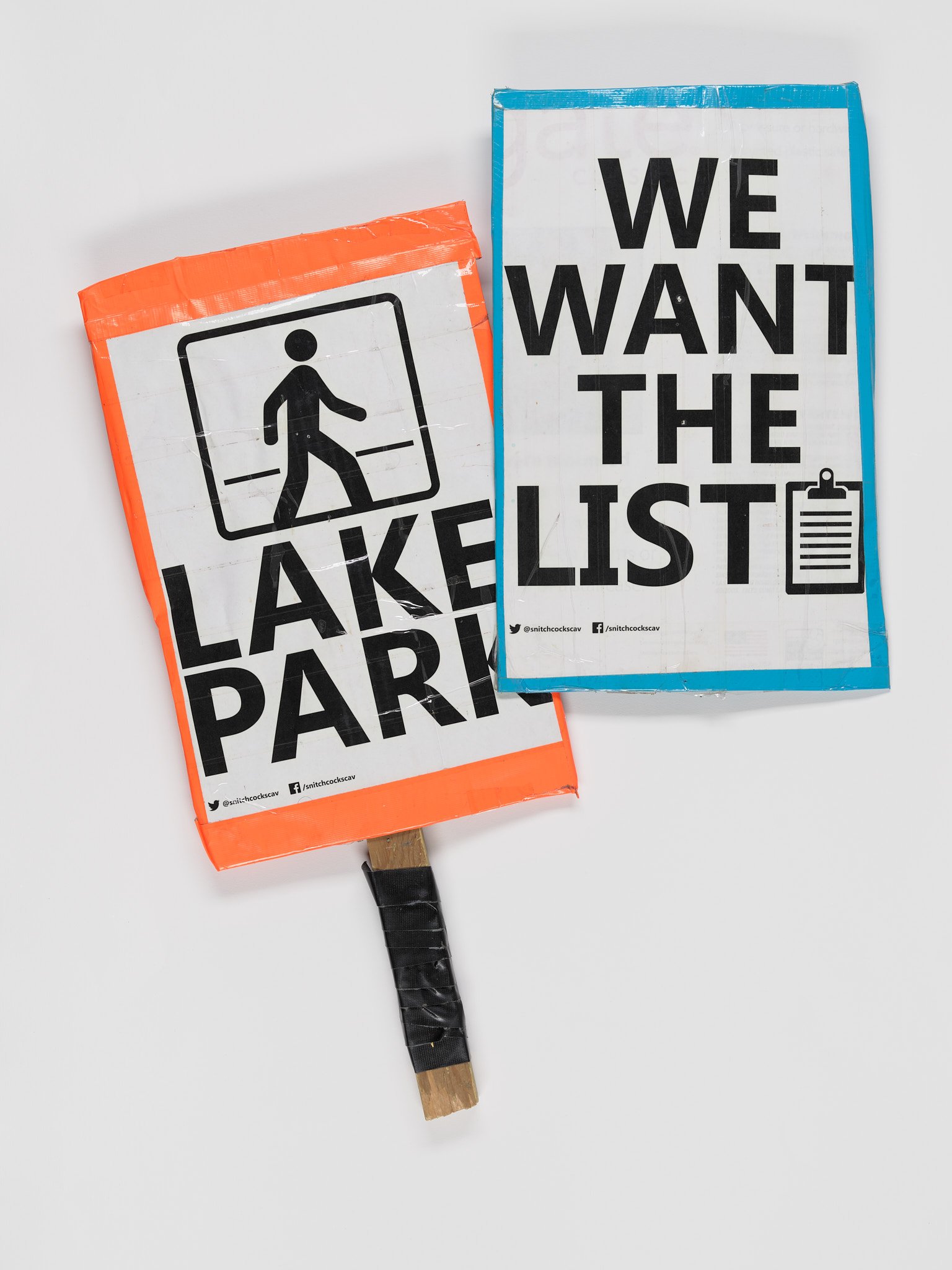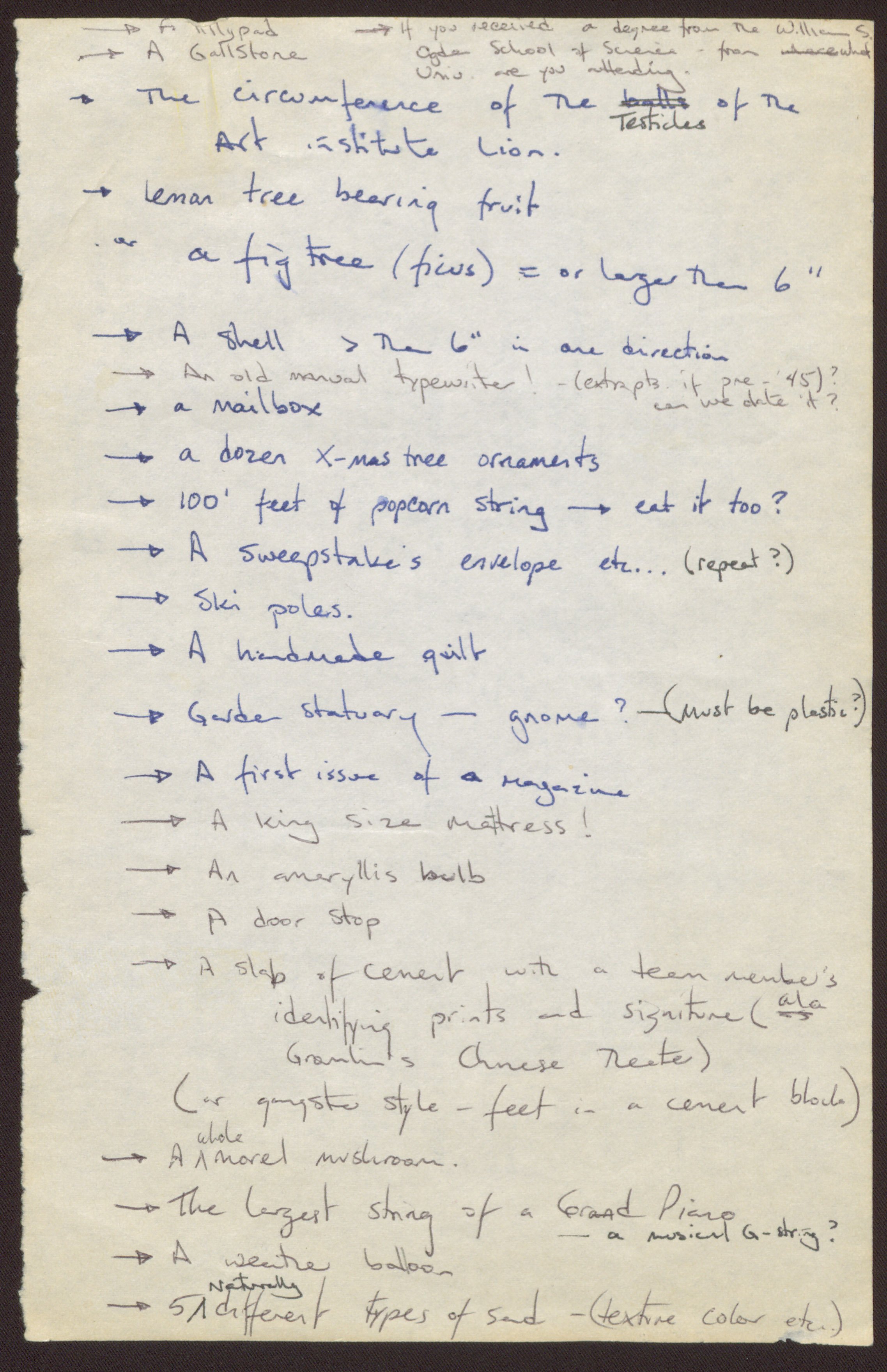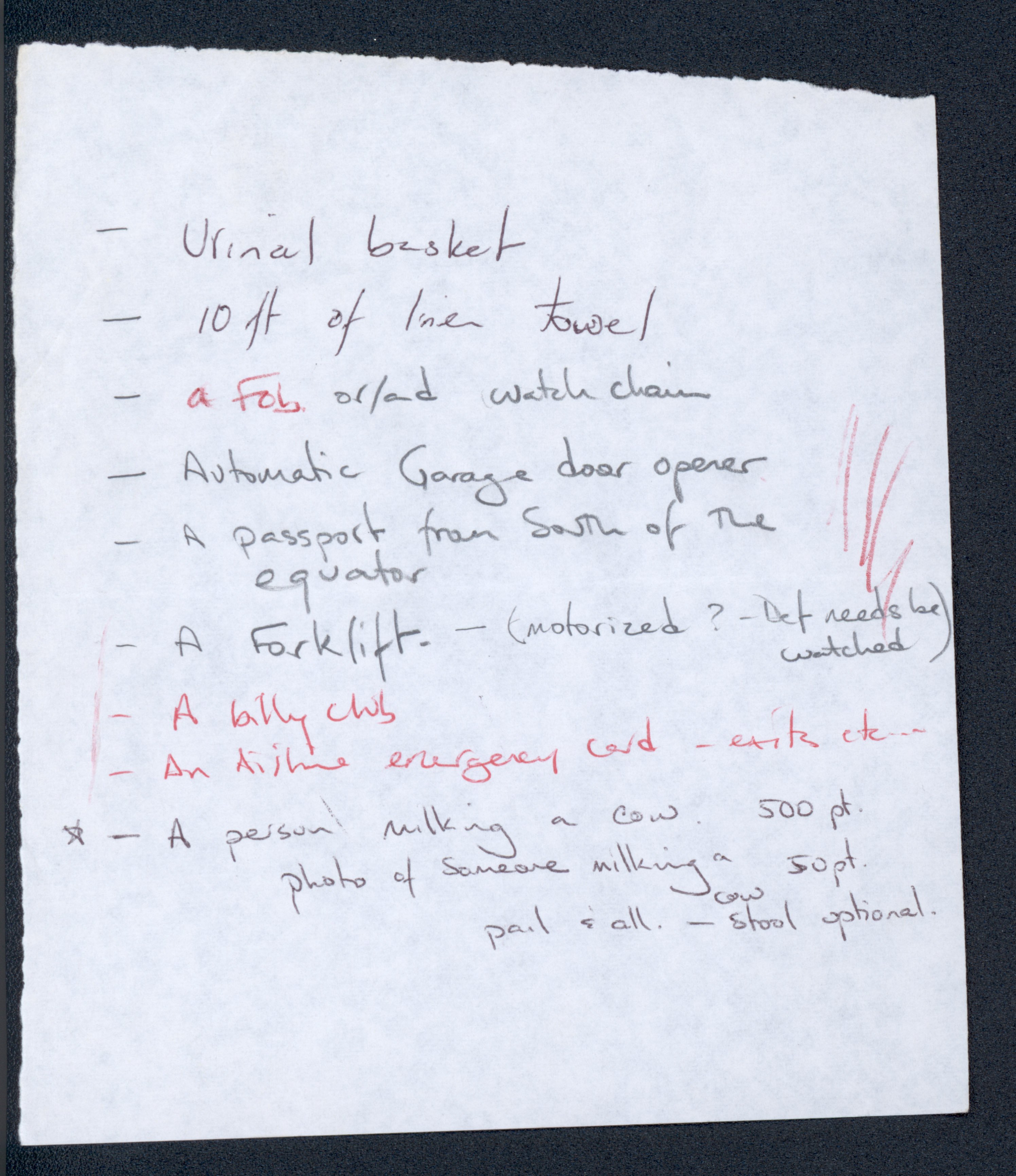The List
The list was born in the C-Shop in Hutchinson, where the founders sat around and tried to make each other laugh with outrageous ideas for list items. Items fell into eight categories: trivia, cheap and simple items, David Letterman-inspired “Stupid Human Tricks” (that evolved into Scav Olympics), large items (that morphed into showcase items), ‘make it’ items (which started the tradition of large builds), ‘go-find-it’ items to get people out and about in the greater Chicago area, road trip items, and the blood drive.
Today, extreme secrecy is involved in the development of the list. A panel of about fifteen judges meets in undisclosed locations from January-April to write, debate, and vote on items. At the end, they are left with the list—typically around 300 ostensibly feasible items. With the advent of the internet, judges needed to select items that couldn’t be solved with a simple Google search.
The list itself is peppered with running jokes, timely pop-culture references, and ties to a Scav theme song of the year. It has a distinctive voice that is quirky, with an undeniably intellectual slant. The judges deliberately include seemingly impossible ‘showcase’ or ‘moonshot’ items (that Scavvies sometimes get!), but overall the list is full of intentionally low-cost items – things that students can scavenge to obtain.
An archive of all past lists can be found at scavhunt.uchicago.edu. [2 points per searchable list]
Running Jokes
[26.2 points]
Mike Royko
The first running gag evolved over a decade into a lopsided grudge match with Mike Royko—Chicago Tribune’s cranky Pulitzer Prize-winning columnist who often disparaged UChicago for being stuffy. Miffed and protective of campus life, judges hit back by involving Royko in repeated Scav items. Beginning in 1987, item #209 asked for Royko’s signature on the front page of a Tribune. While he signed a copy for the first team to reach him, he shut his door to future involvement and judges continued to weave Royko-related items into lists. From Royko-autographed socks to translations of his articles into Pig Latin, digs at frenemy Royko appeared for years. In 1997, weeks after Royko’s death, item #270 called for “A séance to contact the spirit of Mike Royko – adieu, sweet Royko, adieu…” [Press F points to pay respects]
Coleslaw
In 2005, judges innocently asked Scavvies “What’s an acrostic?” and the first letter of each of the items on that page of the list spelled out B-R-I-N-G M-E C-O-L-E-S-L-A-W. Those that picked up on this got three bonus points for item #139 and helped kickoff a long-running inside joke that has made it to annual lists ever since. [139 super lucky acrostic win points]
Showcase Items†
Judges believe the impossible is possible and pepper lists with comically aspirational items that are not always out of reach for clever, resourceful Scavvies. Points for these items are commensurate with the legwork needed to obtain or achieve them. Some players focus on high-point showcase items to maximize scoring efforts during the four-day event. Earlier showcase items tended to center on procuring outrageous items and more recent showcase items involve building elaborate, often tech-heavy things during the short window of Scav. Showcase items are judged in a separate class before regular list items on Judgment Day and draw the attention of many. [500 points to go big or go home]




